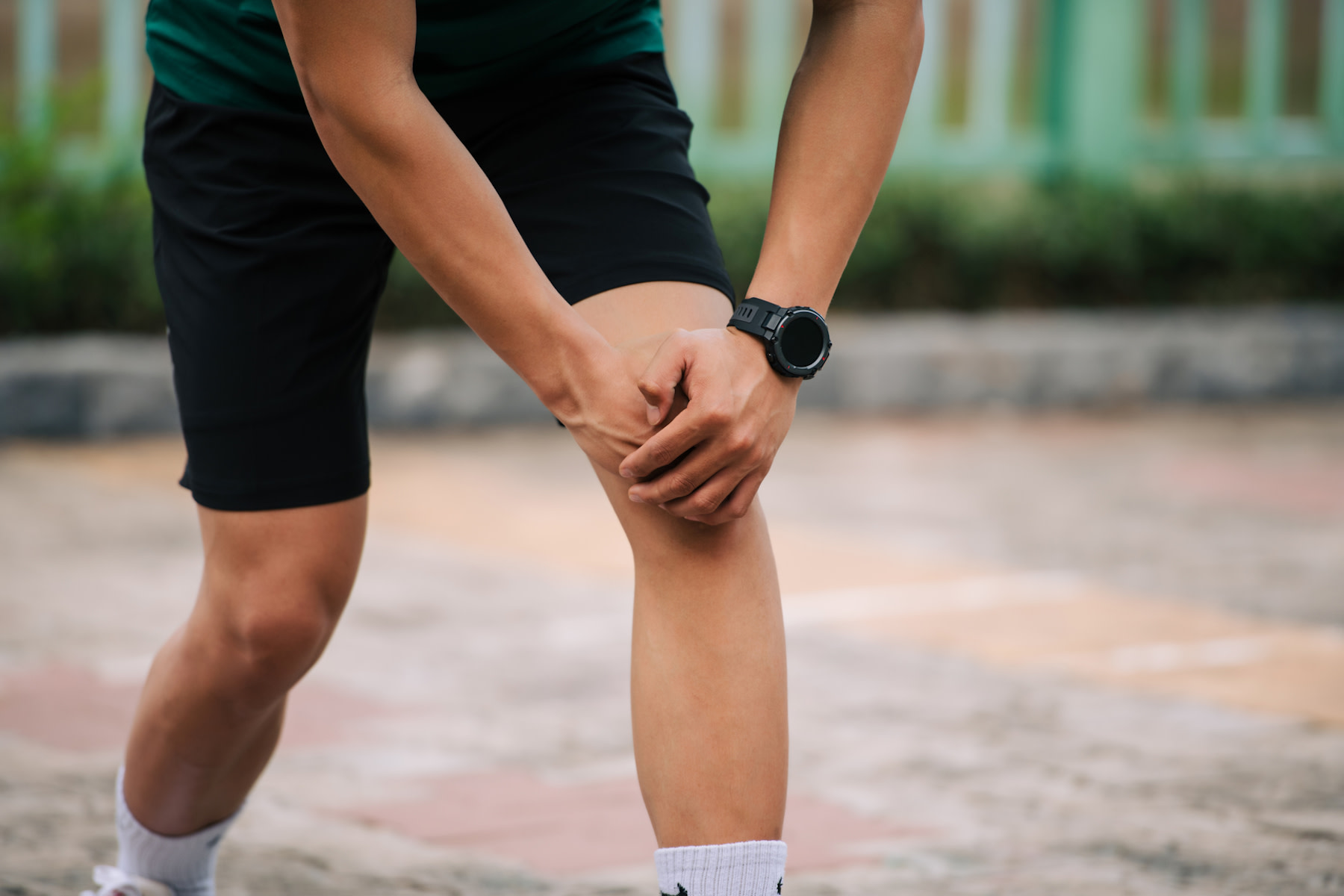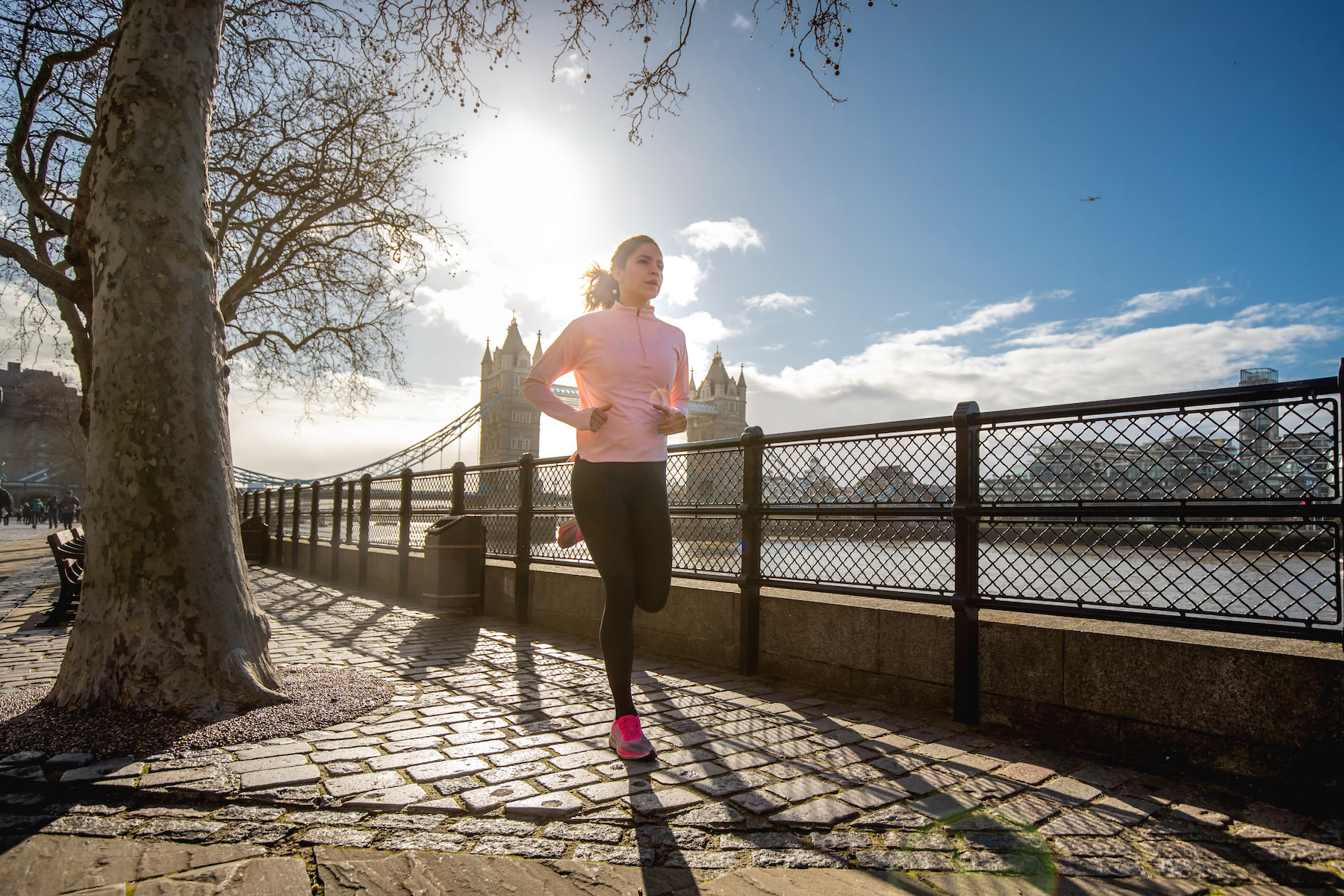
©Marc Tran/ Stocksy United
How Running Affects Your Knees
Is Running Bad for Your Knees?
Can Running Be Good for the Knees?
Do Different Running Surfaces Impact Your Knees?
How to Protect Your Knees as a Runner
When to See a Professional
When Melissa Prestipino was starting out as a physical therapist, she believed what many people do: that running is bad for your knees.
“Since running is faster than walking and puts more forces from the ground upwards through the knee joints, it was said to ‘cause osteoarthritis’ and ‘wear down the joints faster,’” says Prestipino, who owns Maize & Blue Rehab in Sparta, New Jersey.
Now, after more than 20 years in practice, she (and the field as a whole) knows better.
While running certainly can be problematic for some people’s knees, it depends on a variety of factors, such as the surface you’re running on, the shoes you’re moving in, your mileage, your recovery routine, and your overall health, genetics, and anatomy. If you’re training smartly, running can even strengthen your knees—and your bones overall.
Here’s what experts say about keeping your knees healthy, whether you’re a lifelong runner or just thinking about lacing up for the first time.
How Running Affects Your Knees
The very nature of running means you’re driving force up through your feet and into your knees. According to Christopher R. Boone, MD, an orthopedic surgeon in the Bellevue, Washington, region, your knees absorb nearly four pounds per pound of body weight when you run.
That’s why orthopedic surgeon Robert Gallo, MD, a professor in the department of orthopedics and rehabilitation at Penn State College of Medicine, tends to nudge people toward low-impact sports, such as swimming, cycling, or the elliptical if their bone structure puts them at higher risk for injury (like being bow legged), and they’re not particular about what kind of cardio they do.
But if running is a passion of yours, there are ways to maximize the benefits while minimizing the potential downfalls. “I would never say stop running because if you love to run, that creates endorphins that are really good for you,” Dr. Gallo says. “If you take that away from somebody, it's not gonna be good for their mental health, and it may usher in something much worse.”

zoranm/E+ via Getty Images
Is Running Bad for Your Knees?
It depends. There are some situations in which running can be hard on your knees. If you’ve recently had surgery, have patellofemoral pain syndrome (also called “runner’s knee,” or when the cartilage under your kneecap is damaged), have any issues with your meniscus (or the cartilage between your shin and thigh), or have a history of or ongoing knee pain, make sure to speak with a sports medicine doctor or physical therapist before hitting the pavement (or Peloton Tread), says Kelcie Wittman, a physical therapist and spokesperson for the American Physical Therapy Association who's on the United States Olympic and Paralympic Committee.
Some people with knee osteoarthritis may also want to consult with a professional first, but most research suggests running doesn’t make the condition worse.
For instance, a 2023 survey published in Sports Health including thousands of marathoners found that age, BMI, previous injury or surgery, and family history were linked to knee and hip osteoarthritis—but total running mileage wasn’t. In another 2023 review of 17 studies looking at knee osteoarthritis in runners and non-runners, only one study found a higher prevalence of bone spurs (indicative of arthritis) in runners. The rest found running to be a neutral or even protective factor against knee issues and pain.
That doesn’t mean you shouldn’t be cognizant of protecting your knees when you run. “There are certain mechanical faults and training errors with running that can be related to knee pain,” Wittman says.
For instance, shod runners, or basically anyone who runs with shoes, might be more at risk for knee issues. “The shod runners tend to strike their heels so the force goes up through their leg more, and those people probably tend to have more knee pain,” Dr. Gallo says. Minimalist or barefoot runners, however, absorb more stress through their ankles and feet, one 2023 review showed. So if you’re tempted to ditch your shoes to spare your knees, it’s key to transition gradually and build up your foot and ankle strength to prevent injury, the study authors write.
How extreme (or not) of an athlete you are matters too. One 2017 study in the Journal of Orthopaedic & Sports Physical Therapy comparing non-runners, recreational runners, and competitive runners found a bell curve when it came to knee and hip arthritis risk. In other words, not running at all seemed to be just as risky for the knees as running all the time.
“However,” the study authors clarify, “it was not possible to determine whether these associations were causative or confounded by other risk factors, such as previous injury.”
Related Articles
Can Running Be Good for the Knees?
There’s some evidence that running can actually improve knee health.
“Since the knee joints can get stiffened without movement, running can help lubricate the joints which helps prevent osteoarthritis,” Prestipino says. Indeed, one 2018 study in the Journal of Clinical Rheumatology, found that, in people aged 50 and older who had knee osteoarthritis and chose to run, the activity was associated with improved knee pain and no worsening of their arthritis.
Relatedly, weight-bearing exercises, such as running, can help slow bone loss due to Wolff’s law, the concept that bones strengthen and adapt (in this case to running’s repetitive strikes) to better endure the same motion in the future. “There’s the thought that if you run more, it also toughens your cartilage, so it gets more resistant to some of the sheer stress [of regular jogs],” Dr. Gallo adds.
Running also strengthens your quads, which can help protect your knees. A 2015 study published in Exercise and Sport Sciences Reviews found that aerobic exercise, including running, can lead to muscle hypertrophy, or growth.
However, to enjoy the bone- and muscle-strengthening benefits of running, you need to consume sufficient calories, particularly when it comes to protein. “You can get stress fractures if you’re not eating enough,” Dr. Gallo says.
Do Different Running Surfaces Impact Your Knees?
People ask Peloton instructor Kirsten Ferguson about knee issues all the time. “My recommendation is always: What are you running in, and where are you running?,” she says. “If you are running on the Tread, that has a lot of bounce back. I always suggest running there first, and seeing how that feels. The pavement is tough.”
Treadmill running tends to be gentler on your knees and other joints than running on concrete due to the built-in cushioning or, like the Peloton Tread, shock absorption. On the other hand (or foot), people tend to adopt a different foot strike on the treadmill, which shifts some of the force to your achilles, some research shows.

Peloton Treadmills
Two treadmills. One Peloton experience.
One the best solutions, then, is to mix it up—including completing some of your training on trails, if possible. While trail running comes with its own risks, such as twisting your ankle on an errant root, it can make you more powerful across modalities, in part because it engages more muscles than road running, some research shows.
“Be open to trail running, where you have a little bit less impact on the body versus hitting the pavement,” Kirsten says. “That’s something I've started being interested in as I've been adding more miles to my weeks. I started to realize it could feel better on my body if I mix up the terrain I'm running on.”
How to Protect Your Knees as a Runner
Whether you’re gearing up for your first neighborhood 5K or conquering another ultramarathon, protecting your knees should be top of mind to ensure a long and healthy running career. Here, our experts share their top tips for preventing injury.
1. Progress Slowly and Steadily
”Adding on too much mileage at once can be shocking to the knee joints and cause too much overuse and unneeded stress,” Prestipino said. Per Wittman, the general recommendation is to not increase your volume, or in this case mileage, more than 10 to 15 percent each week. Any more than that may be a recipe for injury.
If you’re brand-new to running, try a walk-run class, Kirsten suggests. “Start there, where you're walking for three minutes, and running for a minute,” she says. “You don't have to go out and run five miles to have success as a runner. Progressively getting there is smart and is OK.”
2. Reverse Your Route
Dr. Gallo says that roads tend to be slightly sloped to help with rain run-off, so you could be running on an uneven surface without even knowing it. That’s part of why he suggests reversing your route or, similarly, changing up which direction you run on the track.
“Little things like that can make a big difference,” he says. “Some injuries occur when one side of the body sees more stress than the other side.”
3. Find the Right Shoes for You
Resist springing for the coolest-looking shoe. Get your gait analyzed and foot fitted for one that works for you instead. Most running shoe stores offer this service and great return policies if it doesn’t work out, Kirsten says.
“Everyone has their own type of foot and body type,” she says. “It's important to get analyzed and see what really works for you—especially if you're going to be putting in a large amount of miles.”
4. Don’t Skip Your Warm-Up—or Recovery
“The warm-up is so crucial to making sure your body and your muscles are ready for the workout you have planned,” Kirsten says.
Recovering strategically is key. Kirsten makes sure to foam roll her calves, quads, and hamstrings—even if they don’t feel tight. “A lot of times when you feel pain, it will have nothing to do with that area,” she says. “It will actually be because you're tight on another side of your body, and you're overcompensating.”
5. Prioritize Cross Training and Strength Training
Cross training, through swimming, cycling, or uphill walking, can be a great way to protect your knees from injury, Wittman says. As can strength training, whether that means heavy lifts in a weight room or simple resistance band exercises.
Kirsten recommends calf exercises and single-leg work, such as single-leg deadlifts, to support your running gait. “When you're running, you're popping off of that single leg, so you also want to strength train in that same way,” she says.
6. Take Care of Your Overall Health
No matter how many exercises or stretches you do to support your knees, if you’re not taking care of the rest of your body, those efforts will be a lost cause.
“Getting proper nutrition and hydration to fuel the body for running is very important,” Prestipino says. “Proper sleep at night will also help the body have energy to run. And, avoiding sedentary positions, such as sitting at a desk too long, can help keep you more flexible for running.”
When to See a Professional
If you’re already experiencing some knee pain or an injury, don’t push it. A licensed physical therapist, sports medicine doctor, or orthopedist can help find the right treatment for you and teach you techniques for preventing future injury.
“I think the biggest thing is that you just listen to your body when there is pain and try to understand where that pain is coming from,” Dr. Gallo says. For example, take note of when it hurts (After a certain mileage? On a certain surface?) and where (On the inside or outside of your knee? Only one or both knees?), and bring that information to a professional. “It should not be painful to run,” he says.
This content is for informational and educational purposes only and does not constitute individualized advice. It is not intended to replace professional medical evaluation, diagnosis, or treatment. Seek the advice of your physician for questions you may have regarding your health or a medical condition. If you are having a medical emergency, call your physician or 911 immediately.
This content is for informational and educational purposes only and does not constitute individualized advice. It is not intended to replace professional medical evaluation, diagnosis, or treatment. Seek the advice of your physician for questions you may have regarding your health or a medical condition. If you are having a medical emergency, call your physician or 911 immediately.
Take your runs to the next level
Lace up and enter your email to get articles, instructor tips, and updates from Peloton sent to your inbox.
By providing your email address, you agree to receive marketing communications from Peloton.
For more about how we use your information, see our Privacy Policy.







